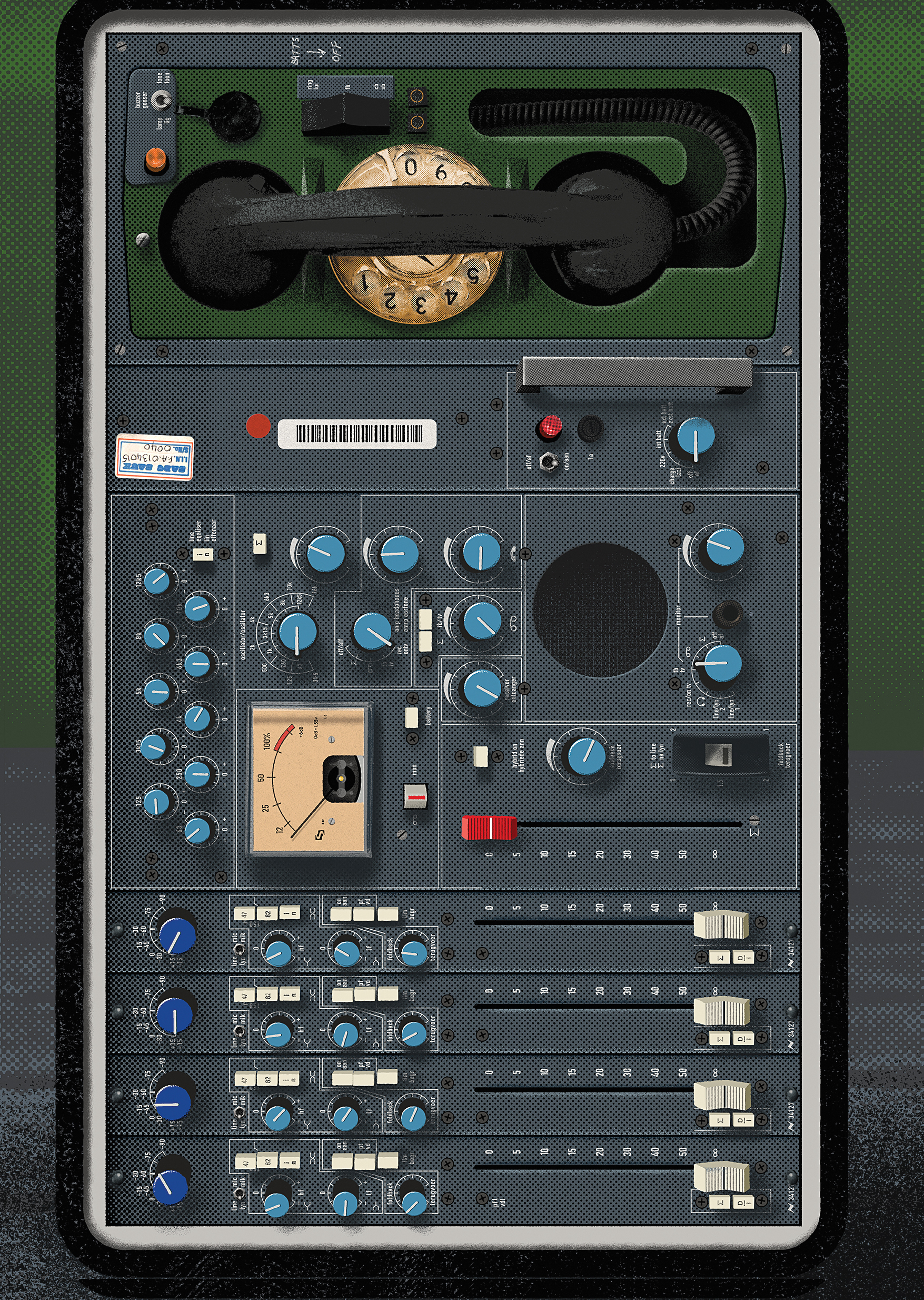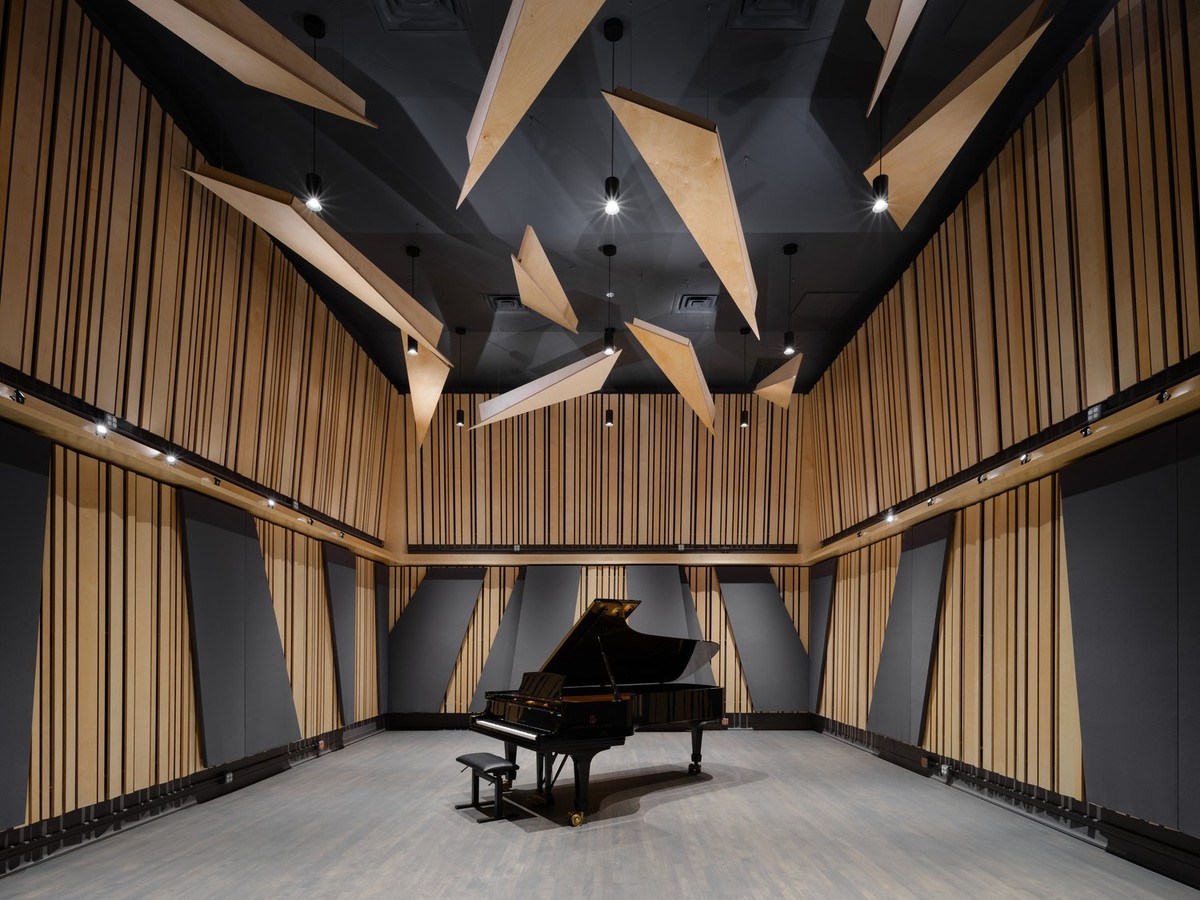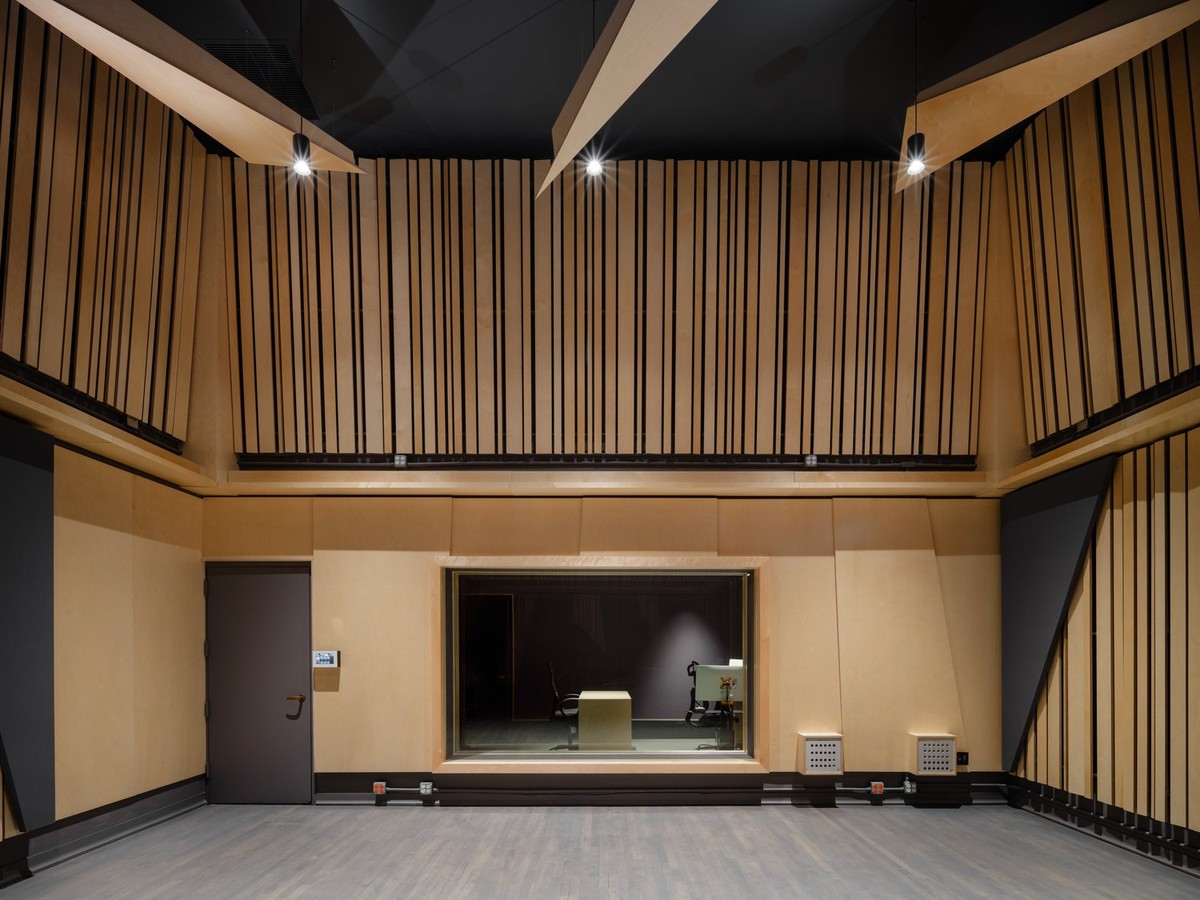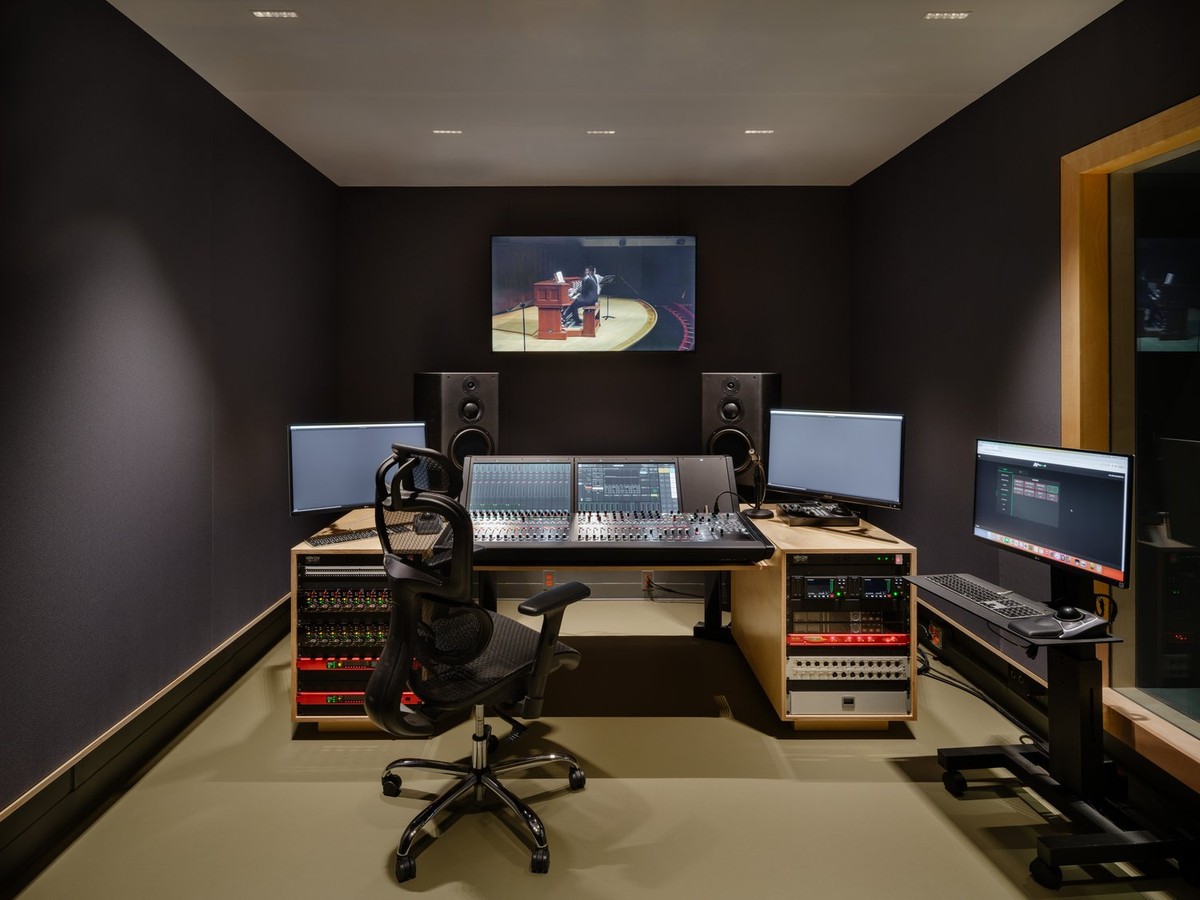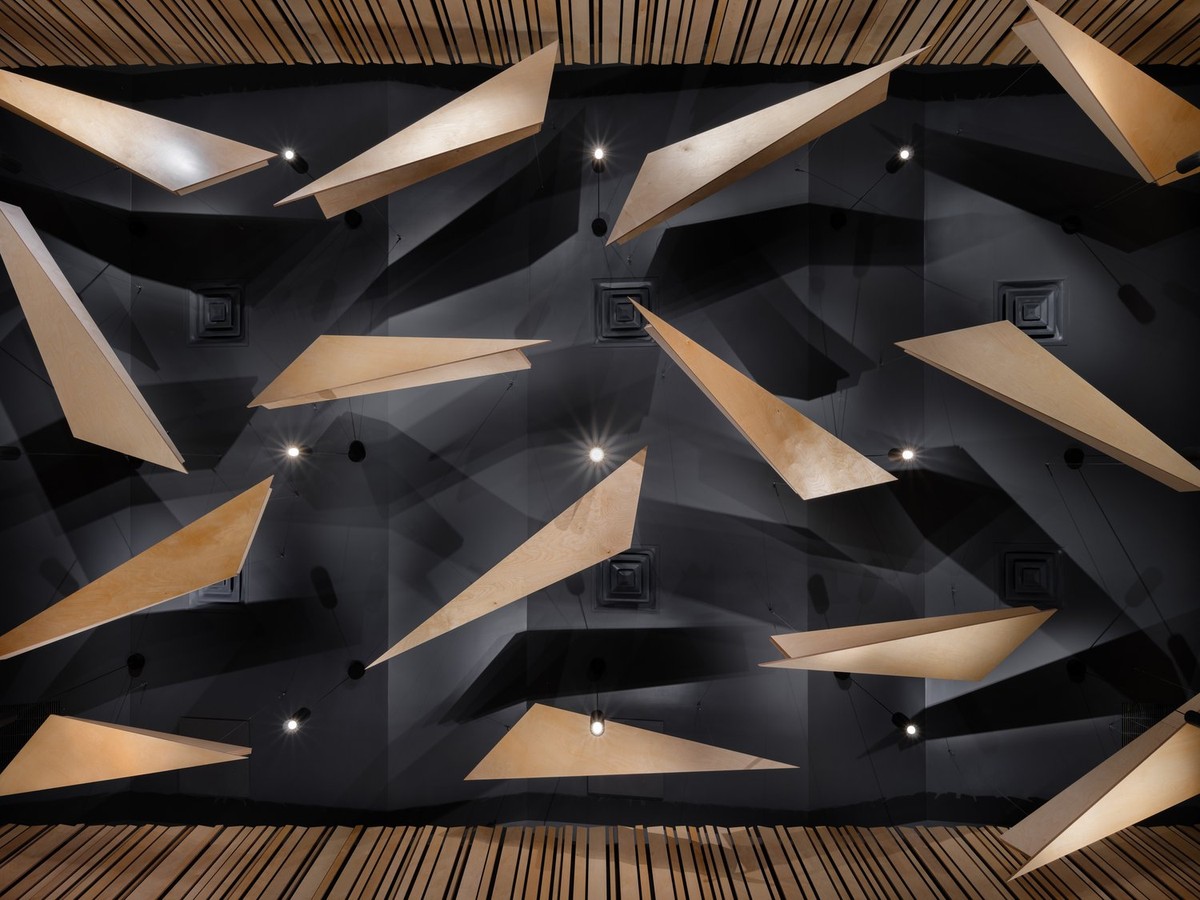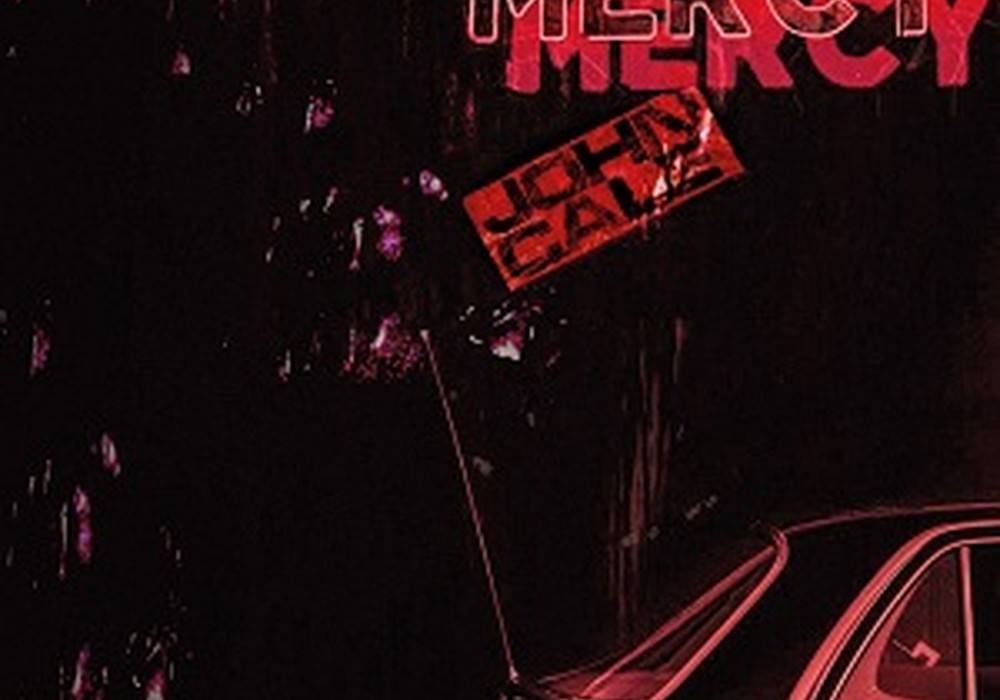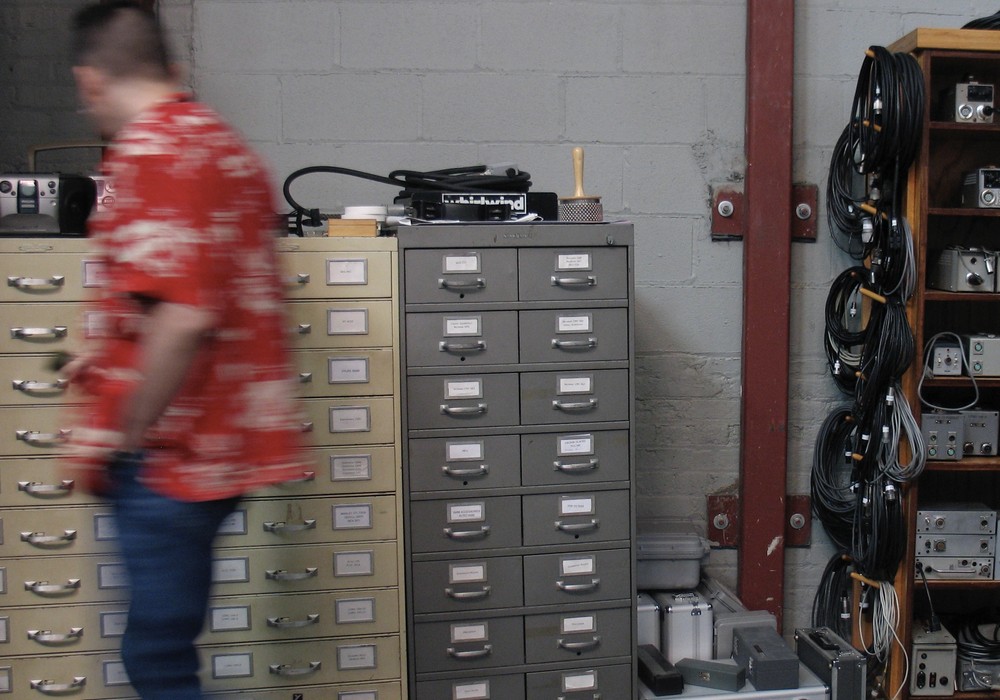Jim Keller: For the Juilliard project we opened up the wall between the control and live rooms with a very large, custom soundproof window. This creates a more spacious feel in the control room and frames the visually dynamic and expansive live room. It also allows unobstructed views between musicians and engineers.
Additionally we developed a custom acoustic millwork design to diffuse the reverberation details of the room. We refer to it as the scatter system, as its purpose is to randomize (scatter) sound reflection angles in order to create a higher density in the character of the decay sound.
The recording studio rooms feature a lighting system configured with fixtures and controls that can change not only light intensity (dimming) but also vary the white color balance in order to match any video production lighting brought in. In addition, preset scenes for any mood can be set and all of this is easily controllable via a touch screen panel on the wall.
The verticality of the scatter system adds to the cathedral-like feeling of space, and draws attention to the acoustical ceiling forms hung from above which draw inspiration from the DS+R's 2007 renovation of Alice Tully Hall. An overhaul of the recording equipment included a brand new Lawo digital mixing console which can send and receive audio from any music hall in the building through the school’s central core audio/video/data system. Matt Marinelli of Coral Sound handled design and integration of all equipment.You can check out more pics of the Juilliard studio and other projects at the Sondhus website.
